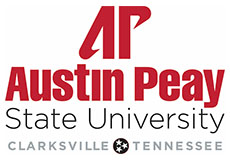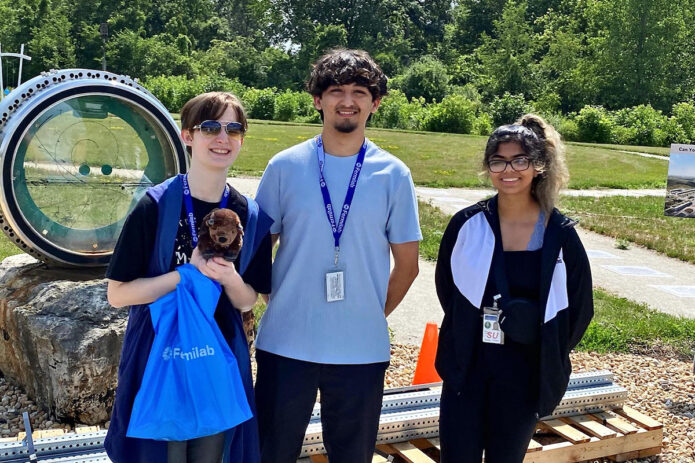 Clarksville, TN – This summer, two Austin Peay State University (APSU) students gained valuable astrophysics research experience during a prestigious program at the Fermi National Accelerator Laboratory in Batavia, Illinois.
Clarksville, TN – This summer, two Austin Peay State University (APSU) students gained valuable astrophysics research experience during a prestigious program at the Fermi National Accelerator Laboratory in Batavia, Illinois.
Meagan Porter, a junior physics major, worked on calibrating telescope datasets into a unified system. This data harmonization will help scientists accurately compare observations from different sky surveys, giving them a new perspective on the complexity of astrophysics.
“I learned there’s a lot more working in moving parts in astrophysics than I first anticipated,” Porter said. “I understood on a surface level that there’s a lot going on in astrophysics because everything’s moving like everything’s happening all at once.”
Fellow APSU junior physics major Sean Peete also participated in the competitive program. Peete’s role involved identifying target white dwarf stars in images and determining their photometric values.
“It was not what I expected at all, in a good way,” Peete said. “I learned so much about astrophysics research and what being a scientist is really like.”
‘More Doors Have Opened Than I Realize’

Meagan Porter’s work at Fermilab will aid efforts to calculate stars’ absolute brightness precisely. Porter gained coding, data analysis, and visualization skills despite little experience.
This data harmonization helps scientists accurately compare observations from different sky surveys. It also aids efforts to calculate stars’ absolute brightness precisely.
Despite having little prior experience, Porter dove into the challenges. He gained coding, data analysis, and visualization skills.
“I had to get much more acquainted with histograms and color density diagrams. And, obviously, reading and understanding code because I wouldn’t get much out of the code if I were using it,” he said.
Porter believes the experience opened doors through networking, research experience, and mentorship.
“I think a lot more doors have opened for me that I don’t realize yet because I am simultaneously thinking like, you know, in the next week or so, but I’m also thinking like 10 years ahead,” he said.
‘Really Opened My Eyes’

The data from the stars that Sean Peete identified will help improve the accuracy of telescope calibration and advance efforts like the Large Synoptic Survey Telescope (LSST). Peete gained vital skills using specialized software, Linux systems, and data extraction.
“I can now perform data extraction from raw telescope images, which only a couple of other students at APSU can do,” Peete said. “It’s an extremely useful ability for astrophysics research.”
Beyond the research itself, Peete valued the chance to network and collaborate. He bonded with fellow students working on particle accelerators and quantum computing. “I made connections that will last far beyond this summer,” Peete said.
‘Mecca of Physics’

Porter and Peete credit physics professor Dr.?J. Allyn Smith for enabling their participation through his long-standing connections with Fermilab researchers. Smith calls the large research laboratory outside Chicago “the mecca of physics.”
Smith facilitated the opportunity for Porter and Peete through his long-standing ties with Fermilab researchers through his work with the Dark Energy Survey (DES), an ongoing astronomical survey that is investigating the mysterious force causing the universe’s accelerated expansion known as dark energy.
The survey is scanning 5,000 square degrees of the southern sky over 525 nights using the Dark Energy Camera, one of the most powerful digital cameras in existence. DES aims to catalog hundreds of millions of galaxies and discover thousands of supernovae to understand better dark energy and the structure and evolution of the universe. The survey’s critical measurements will provide insight into fundamental physics questions.
“Without Dr.?Smith, I would never have had this experience, which shaped my future astronomically,” Peete said.
Smith recognizes that the Fermilab opportunity provided his students extraordinary benefits.
“Working on an innovative project like this gives them an edge in career development and positions them to become prominent scientists,” Smith said. “They will benefit from potential lifelong connections, including to graduate schools. This experience will open doors and give them a leg up beyond Austin Peay.”
Peete is processing everything he learned over the summer at Fermilab.
“It gave me a real peek behind the curtain at the world of astrophysics research,” he said. “I can’t wait to apply it to keep reaching for the stars.”



